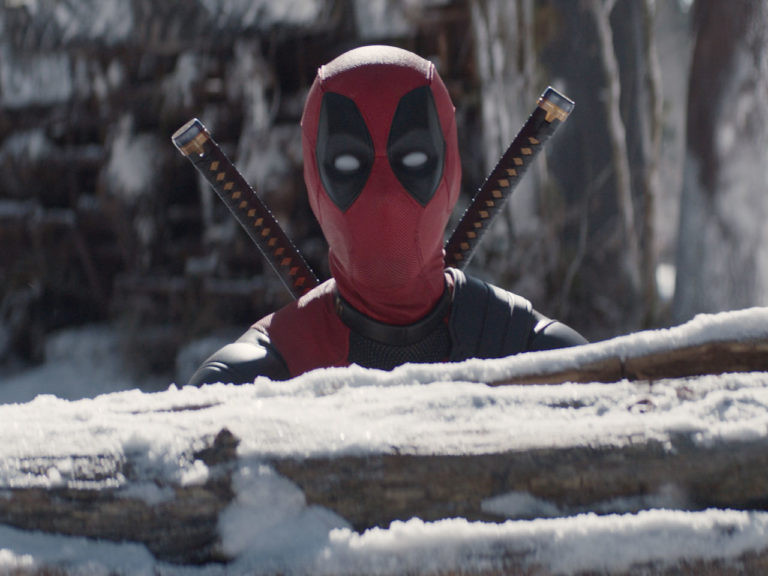
When discussing great Batman comics, we often focus on particular storylines or creative teams. But what about the times in Batman’s history where no matter which title you picked up off the newsstands, you’re almost guaranteed to get some quality Batman content? The times when different creative teams worked on different books to different ends, but it all resulted in amazing Batman comics across the board, month in and month out? Here is the first in a four-part series where we go over these great eras in Batman’s history.

The Bronze Age: 1969-1981
If you like modern-day Batman even just a little bit, you have this era to thank for that. Colloquially known as “the Bronze Age,” this stretch of comics is almost unfairly loaded with legendary talent. Beginning with the story “One Bullet Too Many” in 1969’s Batman #217 from Frank Robbins, Irv Novick, Dick Giordano, and Ben Oda, this era practically reinvented Batman from the ground up. Eschewing the sillier (though still immensely entertaining) tone of the Silver Age, the Bronze Age brought us stories about a Batman who could be described by all sorts of buzzwords: “grounded.” “Vulnerable.” “Realistic.”
Well, as much as a millionaire who dressed up like a bat and fights murder clowns and guys with multiple faces can be realistic, that is.
Really, though, once I start rattling off the creators who made their mark during this period, you’ll know what I mean: Don Newton, Mike W. Barr, J. M. DeMatteis, Pat Broderick, Adrienne Roy, Todd Klein, Walter Simonson, Paul Kupperberg, José Luis García-López, Len Wein, and Jim Aparo are just a few notable names who wrote, illustrated, lettered, and inked Batman stories during this stretch. This list alone would almost be enough reason for you to pick up any random book from this era, made all the more impressive that the vast majority of these stories were published over just the two main titles: Batman and Detective Comics. Batman Family had a decent run in the latter half of the decade, and there are a few off-shoot titles and miniseries here and there, but the bulk of solo Batman in the Seventies was spread across just two books.

And then we look at the finer details, and the teams whose work on those books left the biggest impression. A Batman conversation that does not include the names “Dennis O’Neil” and “Neal Adams” is one that is not worth having, and that pair left perhaps the biggest mark on Batman specifically, and comics in general during this period. If “One Bullet Too Many” paved the way for Batman to change, then 1970’s Detective Comics #395 cemented those changes. The first of O’Neil and Adams’ collaborations on a Batman title, “The Secret of the Waiting Graves” is largely regarded as the start of Batman’s Bronze Age. This would lead to stories that were nothing less than formative and game-changing for the Dark Knight, like Batman #251. The story “The Joker’s Five-Way Revenge!” is equal parts comic booky fun and dramatically gripping, with a Joker who manages to be terrifying in his unpredictability. The issue’s cover is iconic in its own right, and it’s this story that contains the image of a determined Batman racing across the beach, which has become synonymous with the names Batman and Neal Adams.

Then there was the creation of Ra’s Al Ghul and his daughter Talia, which took Batman from street-level vigilante to globetrotting superhero. Ra’s was unlike any other villain in Batman’s rogues gallery: a calm, civil man who wants to save the world… through deadly means. His daughter Talia was no less complex a character, holding her own as a romantic foil for the Dark Knight. It’s a phrase I’ve already used at least once in this piece, but yes, this contribution alone would cement O’Neil and Adams as an iconic Batman creative team. That Adams co-created Man-Bat with Frank Robbins, and O’Neil would go on to write a ton of scripts before becoming possibly the greatest editor of the Batbooks of all time two decades later, the Seventies saw this duo steer the direction of Batman through the popularity of both their output and creations.

The end of the decade brought us one of my favorite singular runs of any comic ever printed: the arc that has come to be known as “Strange Apparitions.” With contributions from legends like Walt Simonson and Len Wein, the majority of the all-too-brief story came from Steve Englehart and Marshall Rogers, who in only a handful of issues became one of the best creative teams of all time. Running from Detective Comics #469-479, there is a lot packed into this story. You’ve got Doctor Phosphorus, Hugo Strange and Rupert Thorne running amok, the reintroduction of Deadshot, the introduction of my favorite Batman love interest in Silver St. Cloud, and a tragic story featuring the third Clayface, Preston Payne. To get an idea of the impact of this run, it has a two-part story where the Joker tries to trademark fish, Rupert Thorne effectively running the city (for a time, at least), Hugo Strange obsessively trying to deduce Batman’s true identity, and said identity being auctioned off to a group of villains. All of these story elements and so many more were lifted for Batman: The Animated Series, but the arc is so good that it’s well worth reading on its own.
I’d be remiss if I didn’t mention The Untold Legend of the Batman, which was a pretty stellar one-stop-shop for Batman’s origin, motivation, allies, and villains, all wrapped up in a neat, tidy three issue miniseries. By modern sensibilities, it’s almost charmingly goofy in some respects, but the work of Len Wein, John Byrne, Jim Aparo, Tatjana Wood, and John Costanza can not and should not be ignored. Dated aspects aside, it’s a pretty comprehensive crash course through Batman’s history up to that point, streamlining his origin and telling a self-contained story that was a pretty perfect primer for pre-Crisis Batman. It’s beautiful to look at, thanks to Byrne, Aparo, and Wood’s masterful contributions and the beautiful José Luis García-López covers, and is still incredibly readable to this day, even if Thomas Wayne wearing the first Batsuit and Bruce being the first Robin is just a little too cute.

If you want some more Silver Age stylings with your Bronze Age aesthetics, this era saw The Brave and the Bold effectively turned into a Batman team-up book, and it was crazybananas insane. Writer Bob Haney– who did not care one bit about things like “narrative consistency” and “continuity”– was frequently joined by Jim Aparo for some silly, weird, and memorable stories. Pairing the Dark Knight up with characters like Aquaman, the Metal Men, Plastic Man, Sgt. Rock, and even the Joker, the series had a single purpose: tell entertaining stories. It wasn’t grounded like Batman and Detective Comics, but it was still a huge part of Batman’s history. I mean, where else are you going to get stories that break the fourth wall or see Batman and Plastic Man saving Christmas from cigarette smugglers?

To cap it off, we’ll fast forward to Detective Comics #500, which is chock-full of great stories and immense talent. Perhaps the best of the lot, and one of the best Batman stories ever printed in general, is “To Kill a Legend” from Alan Brennert, Dick Giordano, Adrienne Roy, and John Costanza. Thanks to the Phantom Stranger, Batman and Robin find themselves on another Earth where Bruce Wayne’s parents have yet to be killed, so the Dynamic Duo have to weigh the consequences of changing the past or allowing fate to run its course. It’s a somber yet hopeful tale, and one that highlights Batman’s humanity and heart in equal measure.
ESSENTIAL READING:
- Tales of the Batman: Steve Englehart
- Batman by Neal Adams Book One
- Batman by Neal Adams Book Two
- Batman by Neal Adams Book Three
- Legends of the Dark Knight: Jim Aparo Vol. 1
- Legends of the Dark Knight: Jim Aparo Vol. 2
- Batman: Tales of the Demon
- Detective Comics: 80 Years of Batman Deluxe Edition
- Tales of the Batman: Len Wein
NEXT: Post-Crisis!
Fun Jug Media, LLC (operating Batman-News.com) has affiliate partnerships with various companies. These do not at any time have any influence on the editorial content of Batman News. Fun Jug Media LLC may earn a commission from these links.


